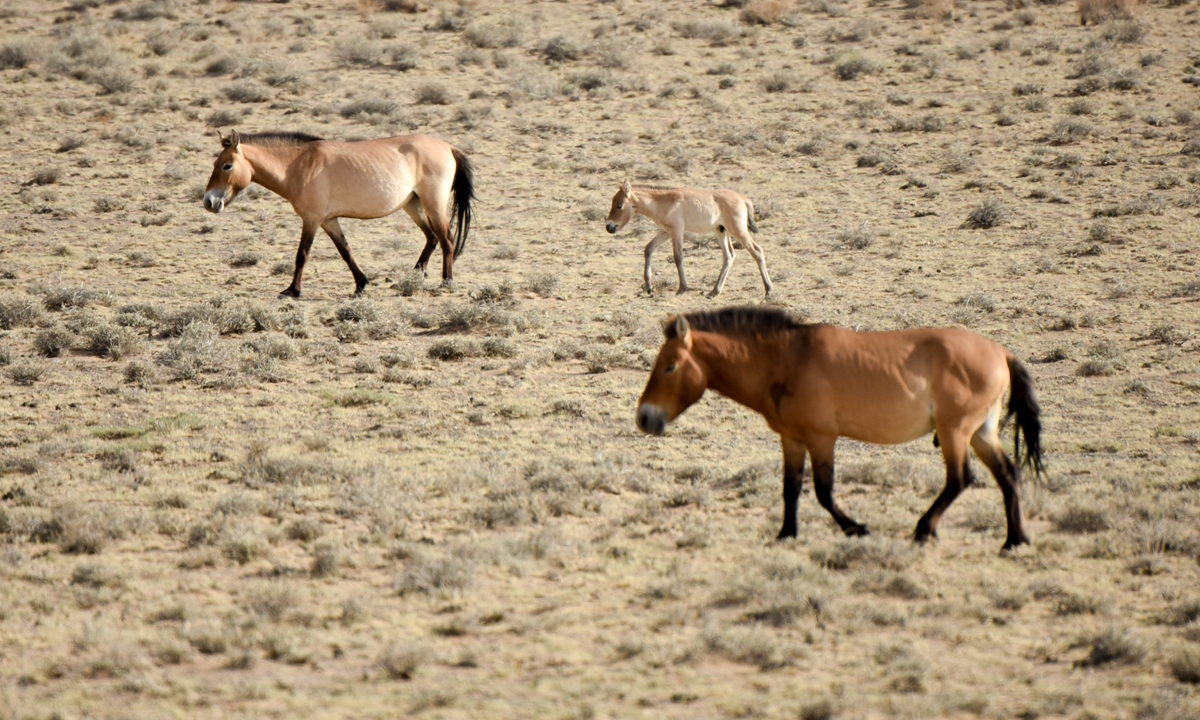ARTS / CULTURE & LEISURE
China’s Xinjiang Uygur Autonomous Region to build first two national parks

Przewalski's horses are seen at the Kalamayli Nature Reserve, northwest China's Xinjiang Uygur Autonomous Region, June 3, 2020. (Xinhua/Ding Lei)
Northwest China's Xinjiang Uygur Autonomous Region plans to establish its first two national parks to protect endangered species and local ecosystems, the Guangming Daily reported on Sunday.One national park will be located in the Kalamaili region, a typical representative of China's temperate desert ecosystem and the concentrated distribution area for wild animals such as Przewalski's horse and the Mongolian wild donkey.
With only a little more than 2,000 members of the species left, Przewalski's horse is the world's only remaining wild horse. After more than 30 years of efforts, China has successfully bred over 800 of these wild horses across six generations in Xinjiang, making the region the largest breeding base for Przewalski's horses in the world.
The other national park is near the Kunlun Mountain range. Boasting the highest concentration of glaciers in the middle and low latitudes of China, the region is also a representative example of China's plateau desert and alpine grassland ecosystems.
The two national parks - the Kalamaili National Park and Kunlun Mountains National Park hold great significance for efforts to protect the authenticity, integrity and biodiversity of local ecosystems and maintaining national ecological security, according to the report.
Xinjiang's Forestry and Grassland Bureau plans to continue promoting the further establishment of national parks, which include strengthening monitoring, supervision and evaluation of its ecosystems, species and habitats and human disturbances.
According to an opinion issued in 2020, the plan is to have a natural reserve system with national parks as the main foundation to be built in Xinjiang by 2025.
Establishing a national park system is an innovative policy design for China. Since 2015, China has launched 10 pilot national parks.
In October 2021, China officially designated the first group of national parks including the Sanjiangyuan National Park, the Giant Panda National Park, the Northeast China Tiger and Leopard National Park, the Hainan Tropical Rainforest National Park and the Wuyishan National Park to further improve the national park system in line with the country's nature conservation efforts.
